When Shooting a Short Doc in the Wooded Hills of Haiti, Try Not to Use a Palm Frond as a Rain Cover
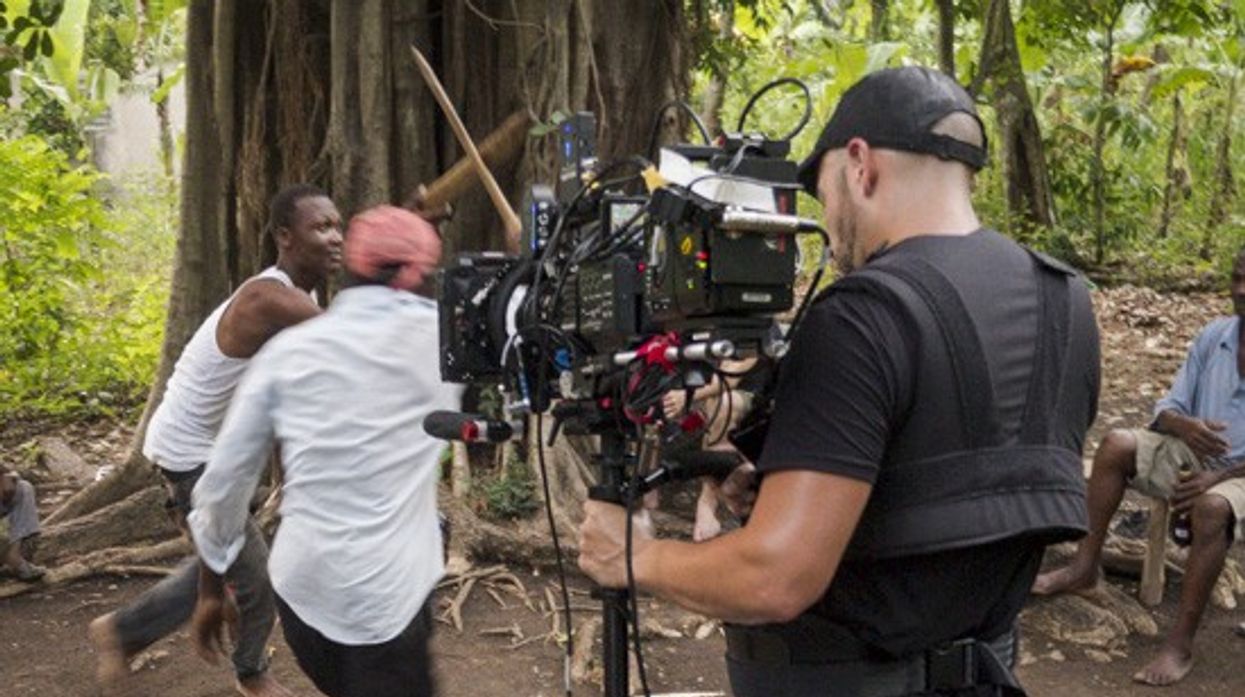
Papa Machete, a short doc centering around machete fencing and shot in Haiti under difficult circumstances, is now screening around the country. Since their successful Kickstarter back in 2014, they've gotten a world premiere at the TIFF Film Festival in 2014 and a U.S. premiere at Sundance 2015. The film will also be shown Sunday, March 29th at 4:30PM at BAM's New Voices in Black Cinema.
Here is a brand new BTS video showing just how difficult the shooting was:
This was originally posted in June 2014:
Leaving your home to shoot a movie in different country is certainly not for the faint of heart, something cinematographer Richard Patterson knows all too well. When he traveled to Haiti from the U.S. to shoot a short documentary entitled Papa Machete about the slowly vanishing martial art of Haitian Machete Fencing, he was met with many different types of issues concerning gear, media management, you name it. Thankfully, Patterson decided to share what he learned with all of us.
This is a guest post by Richard Patterson.
"Professor” Alfred Avril unsheathes his weathered machete every day in the tropical hills of Jacmel, Haiti.
Most days, it’s to feed his family. He is a subsistence farmer, and a father of eleven whose perseverance can be seen in the lines around his eyes. On other days, the blade comes out for an entirely different reason: to train locals and foreigners alike in the mysterious art of Tire Machèt -- Haitian machete fencing.
The idea of five America-based filmmakers documenting his way of life and the martial art he once kept concealed was completely foreign to Professor Avril. That we were even admitted to this world was an honor, and a responsibility.
I found out about Haitian fencing through my good friend Jason Fitzroy Jeffers, who regaled me with the story of an old man who had mastered the art of combat with a machete, the very tool the slaves once used to work the sugar cane fields. He also asked me if I would be interested in helping him put a short film together about it. Machete fencing in Haiti? How could I say no?
For a documentarian, this was the kind of authentic story that many of us dream of capturing. Above all, we wish to step into a scene without an agenda, to document a subject without an agenda of their own. However, it was this same naiveté about the filmmaking process that tested our wits and redefined the story we set out to tell.
The Importance of Preparation and Camera Checkout
Once we’d finalized our plans to fly to Haiti, my apartment in New York became a staging ground. I thought I understood the fluidity of the shoot and planned accordingly, however, the unforgiving reality of shooting a low-budget doc in Haiti still awaited my fellow filmmakers and I.
Deciding on the camera package was simple. Capturing unlimited slow motion at 120 or 240 FPS without battling or pausing for a buffer was the main priority. 4K 12 bit was a plus and I needed to use a rig that I could operate with that required very little assistance in the field. At the time, I had just upgraded my Sony FS700. We quickly searched for the new IFR5 and R5 recorder which provided the slow motion functionality for the upgraded FS700. Budget was king and we didn’t have much of it. This ruled out renting a RED SCARLET or EPIC, so it made sense to go with the Sony. Each of us contributed what we could and collectively divided the expenses.
I turned to AbelCine in NYC for assistance on a camera system that was relatively foreign at the time. Our camera checkout was educational. The rig was tricked out to work with my Glidecam X22, SmallHD AC7 screen (that I used on the bottom of my sled), and an HD-SDI Terradeck Bolt. The IFR5 received the only dedicated SDI single from the back of the camera and I webbed together an HDMI / AJA distribution system to feed all my other needs.
On one hand I felt like we won; we had a rig capable of the multiple tasks ahead (steadicam, 4K, 240 fps slow-motion work, and handheld) all within budget, but I also felt overwhelmed. I was looking at a puzzle of wires and converter boxes that was bound for a country still recovering from a devastating earthquake four years ago. I wanted the very best for this doc, so early on, I over prepared by packing primes lenses and filtration, a steadicam and a monitor for my director. I soon learned the weight of my decision -- literally. In retrospect I discovered that challenging circumstances require quick adjustments and it’s better not to be weighed down.
As if this wasn’t enough, I also had to get my head around my newly modified rig. The upgrade for the FS700 now provided the SLog2 camera profile necessary for shooting in 4k. The update had just been released. Prior to getting the additional recorders I shot several days using the AVCHD native codec. I researched the various exposure technics for this profile. I thought the image noise level would improve with the added recorders. During checkout, I once again noticed the grain in raw 4K. However, the detail, color space, and sharpness of the raw image was better than the native AVCHD, so I committed to this direction. Additionally we planned to color correct the footage and my experience with the FS700s 8 bit AVCHD codec during color timing was disappointing. Therefore, I went with the SLog2 despite the noise.
I looked around my station and realized it all had to come with me to make it work. I zipped it all up, hoisted it into a cab, and set off for JFK.
Electricity and Media-Management in the “Third World”
We landed in Port-au-Prince, the capital of Haiti. It was August, the heat was palpable, and in tow were my five bags and cases of gear. Smartly I had a US Customs officer stamp a schedule of my insurance papers listing my equipment at JFK prior to boarding. This was not an official Carnet, as Haiti doesn’t accept them, but it did provide me with an “official” looking piece of paper proving the gear was mine and AbelCine’s and I did not intend to sell them. This proved to be useful to get me released from the Haitian customs officers who held me for an hour at the airport.
A rough road to Jacmel delivered us to our hotel three hours later. The electricity proved to be a challenge at our lavish, by all accounts, accommodations. We did not purchase or transport an APC backup for our laptops, hard drives (20 terabytes of external storage), or battery chargers. We didn’t rig an inverter to a car battery either. However, we did secure our power extensions in a magnificent web of gaff tape to the loose power sockets in each of our rooms. We used the file confirmation program ShotPut to verify that our dailies were transferred completely, however on USB 2.0 this equalled six hours per 512 Terabyte SSD card. Our shooting schedule for each day was now not only determined by Professor Avril’s training schedule, the weather, and transportation, but also our storage capacity and offload time.
We pushed on, prepped and on the second day into the production our field tests with the camera revealed a tremendous amount of noise in the raw footage. Coincidently, the HDMI port on the camera simultaneously stopped working. Concerned that this could derail our shoot, we desperately sent out a series of private S.O.S. emails and tweets to Sony and Abel. With little or no internet connectivity, the bit of support we received came in slowly. Finally, with Abel helping us troubleshoot, we determined that the VC board of the Sony FS700 wasn’t working properly and I had to perform a hard reset on the camera -- that’s the little hole located at the top of the camera accessible by a small pin. After a day of trials and error, the camera was able to record the raw and 2K signal without noise only when the HDMI was not connected.
With our fix now working, we headed into the hills and met our family. We started slowly and introduced our plan with respect and patience. The cultural divide was large and our hosts and liaisons, Mike Rogers and The Haitian Machete Fencing Project, were very thorough and caring yet firm. There were perceptions and expectations to be managed on all sides.
Transportation from this point forward was our biggest challenge. Fixers and drivers charge handsomely for their services -- far beyond our modest budget. As such, we often had to rely on “motos”, small 125cc motorcycles that often carry three to four people with ease. Unfortunately, this method of transport just wasn’t a safe bet for the camera package. The trucks we could afford often encountered problems from running out of gas to flat tires. At times we had to travel downhill from the locations. Hiking with our camera package was made possible using two Tenba backpacks.
Hope for the Best, Prepare for the Worst
Looking back at this production I can say that I learned a tremendous amount on the shoot. The logistical planning combined with managing my own personal expectations for the look clashed with the practicality of a situation, and the flexibility one must embrace while working in a foreign country. It requires a balance between my 1st world desires within a 3rd world environment. Communication between your main subject and establishing a level of trust with them and the translator/cultural liaison is also key. And when all else fails and you’re stuck with no rain coverage under foreboding skies -- use a palm frond.
Our off-line edit was completed in Miami by our director Jonathan David Kane. We worked with Color Collective here in NYC with colorist Jeff Altman. Jeff was very excited by the content and really gave us a great deal of feedback and a subtle artistic touch. I sat in with Jeff as we spun the color back into the finished 10-minute documentary. As I witnessed it come to life, the frustration and physical exertion I had felt in Haiti faded quickly, and what was distilled from our efforts is the most honest story we were able to tell. The use of prime lenses, steadicam, and the 2K 240 FPS slow motion -- not to mention the RAW 4K 24p footage -- all paid off in the color session.
This story of “Professor” Alfred Avril is one that is worth telling. He and his family, like so many other Haitian families, are getting by with so very little but hold their head high and proud. His dedication to teaching the martial art of Haitian fencing, one that aided Haitian slaves to defeat Napoleon’s armies, sets him apart. The first world concerns of my camera, although important for the project, were minuscule when compared to Mr. Avril’s circumstances. It took five of us to make this documentary, two goats at the cost of $100 to nearly feed us, our hosts and Avril’s small community at our wrap party, and it will take $6000 plus to build a new home and training facility for the Professor. We’ve detailed our intentions in our Kickstarter campaign, and we’ve also posted the trailer of the film. If you’d like to contribute, please do, as all contributions will help with film festival submissions and -- most importantly -- help build a family a home.
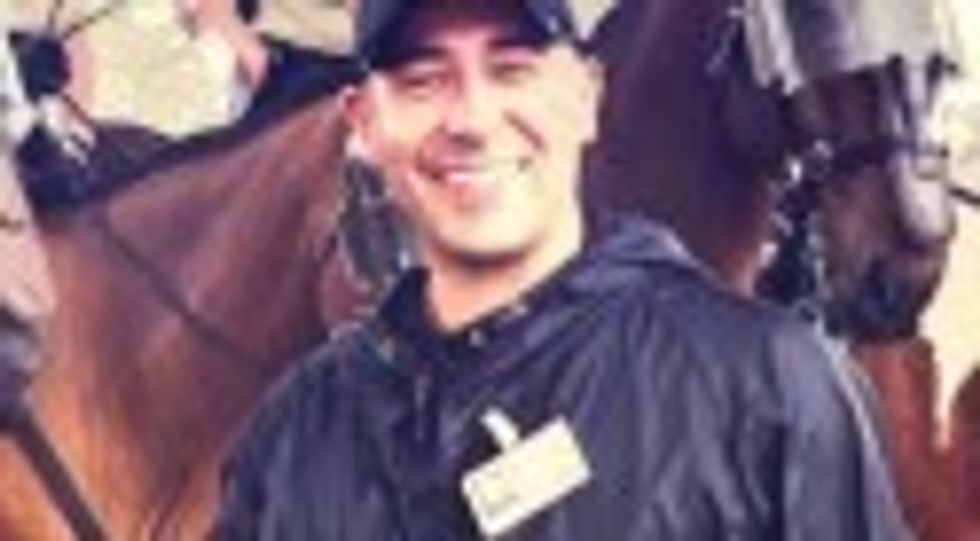
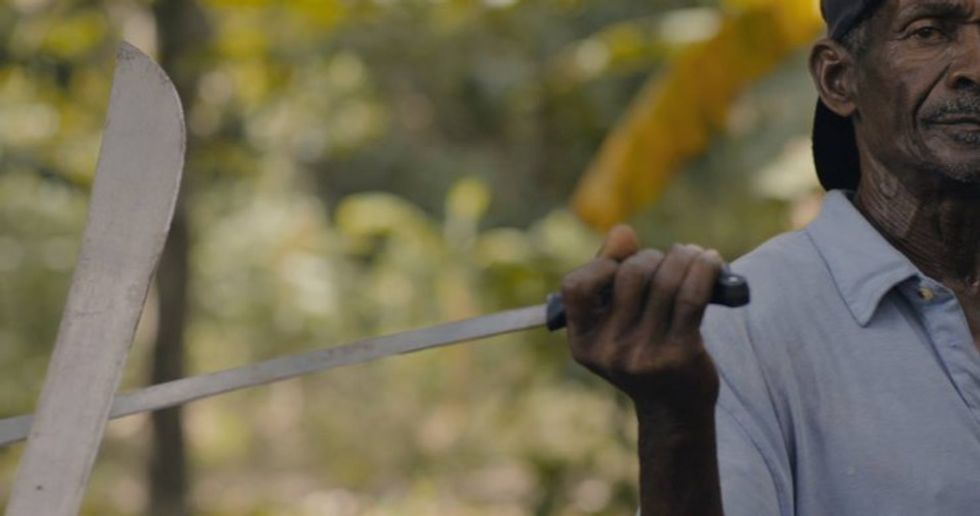
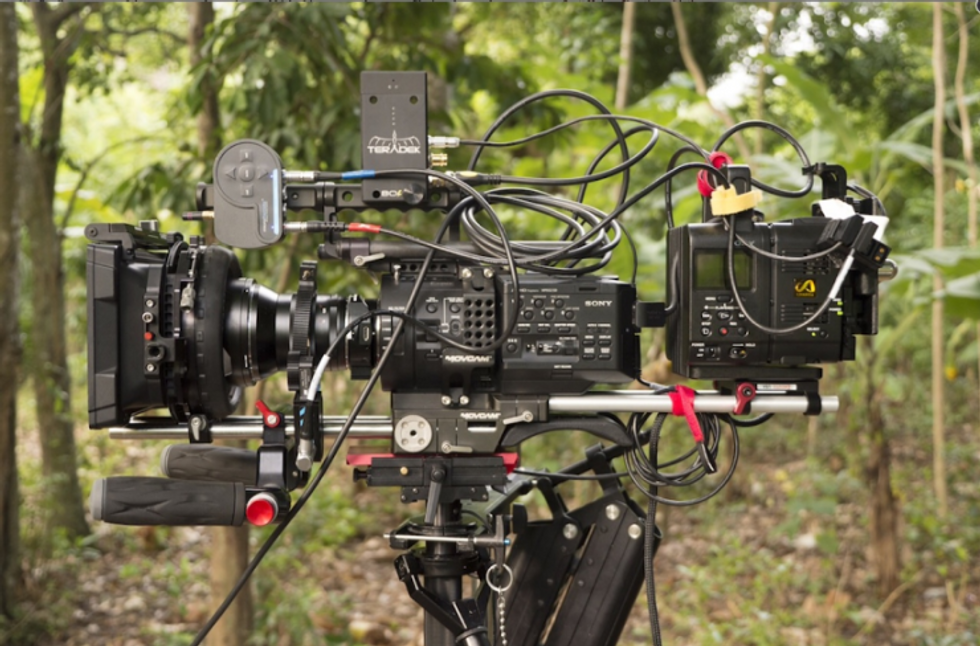
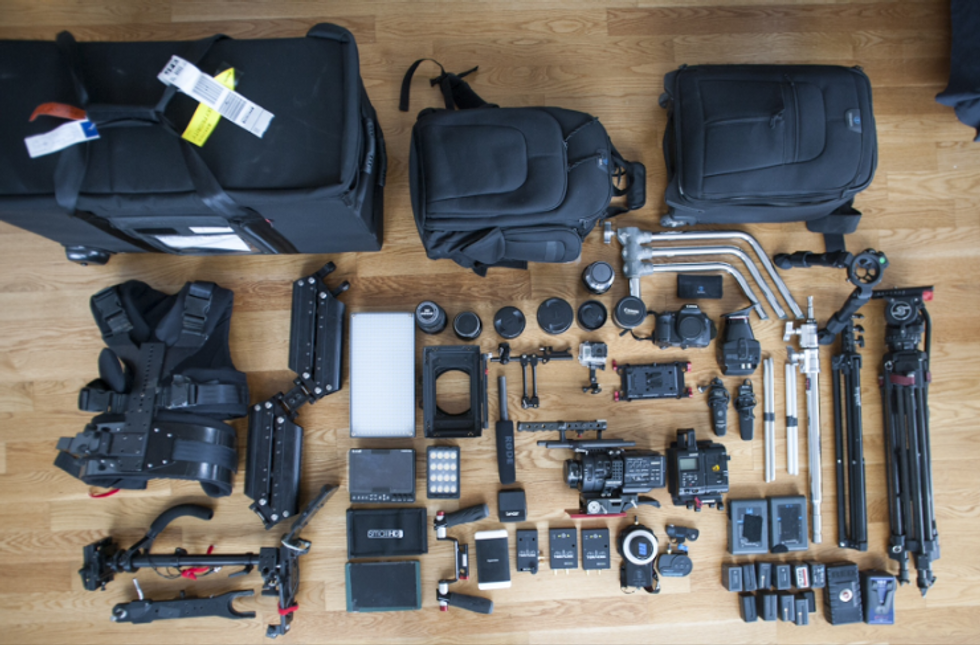










![Ethos, Pathos, Logos: 20 Effective Ways to Advertise [Infographic]](https://nofilmschool.com/media-library/ethos-pathos-logos-20-effective-ways-to-advertise-infographic.jpg?id=34064614&width=600&height=600&quality=90&coordinates=560%2C0%2C0%2C0)

